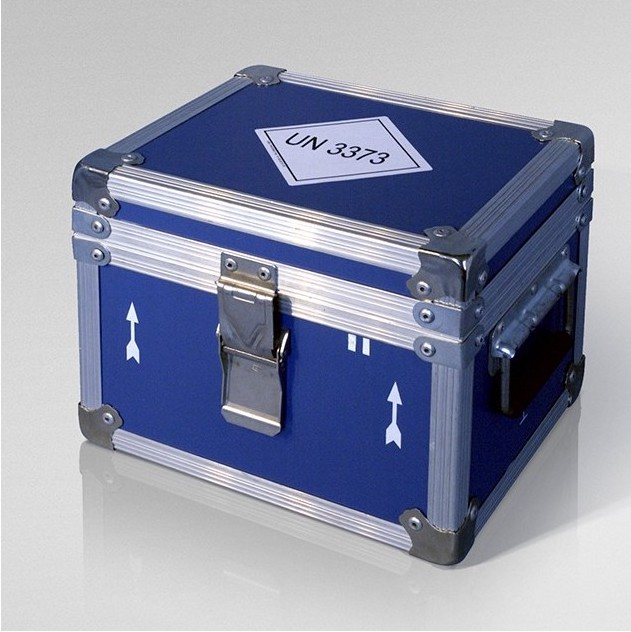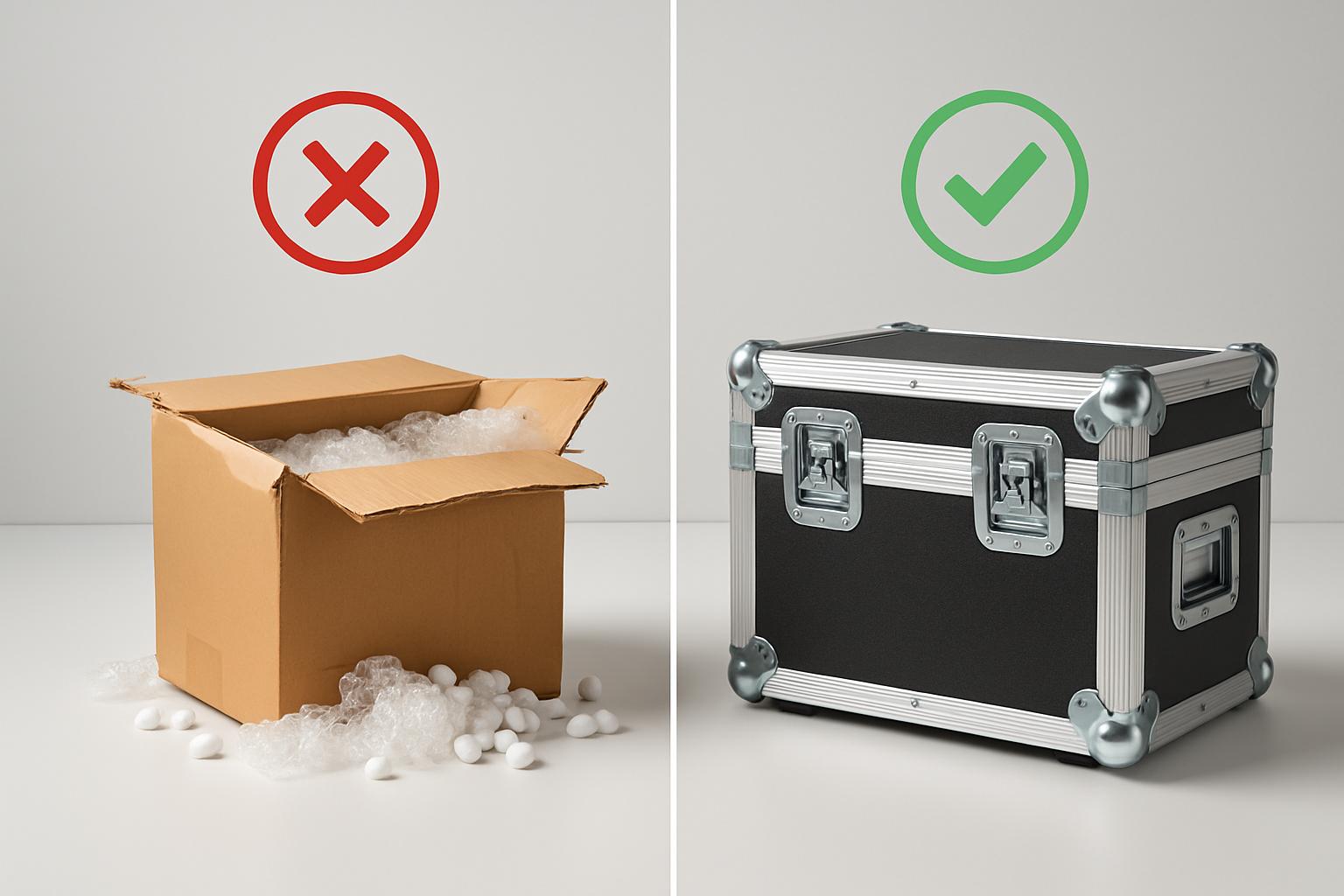
Approved Flight Case
Some goods are priceless: a prototype resulting from months of R&D, electronic equipment vital for a defense mission, or a unique competition battery. For these assets, transport is not a simple logistical stage, it's a high-risk operation where failure is not an option. The slightest damage, the slightest shock, can destroy a project and cause colossal financial losses.
Faced with such challenges, how can you guarantee absolute protection? The double risk is maximum: the risk of physical damage (shocks, vibrations, climatic conditions) and the risk of regulatory non-compliance if these goods contain dangerous components, such as lithium batteries.
This article is your guide to understanding how the custom-made approved flight case constitutes the only viable answer to eliminate these two risks simultaneously, transforming a logistical expense into a strategic investment for risk management.
Why is Standard Packaging Never an Option for High-Value Goods?
It may be tempting, for cost or simplicity reasons, to consider standard packaging for high-value equipment. This is a calculation error that can cost very dearly. Standard packaging, whether cardboard boxes or generic crates, are designed for standard shapes and weights. Their limits are quickly reached when faced with the challenges posed by unique and critical goods:
Inadequate Shock Protection
Standard cushioning (flakes, bubble wrap) cannot perfectly immobilize an object with complex geometry. The slightest play inside the crate transforms into repeated impacts during transport, potentially damaging welds, connectors, or sensitive electronic components.
Vulnerability to Vibrations
Low-frequency vibrations during air or road transport are a major cause of failure for electronic equipment. Standard packaging offers no specific vibration absorption, leaving your goods exposed to this invisible but destructive risk.
Total Absence of Regulatory Compliance
Standard packaging possesses no certification for transporting dangerous goods. Shipping a prototype battery or equipment containing chemical products in a non-approved crate is illegal and exposes the shipper to severe sanctions and total liability in case of incident.
The hidden cost of "cheap" is clear: the savings made on standard packaging is insignificant compared to the cost of the potential loss of the transported goods.

Understanding Double Protection: Physical Robustness and Regulatory Compliance
The approved flight case is an engineering solution that provides a response on two fronts: absolute physical protection and total legal guarantee.
The Engineering of Physical Protection: A Custom-Made Cocoon
The robustness of a flight case doesn't come from chance, but from a design conceived for the most extreme conditions:
- The Structure: Made from plywood panels (often birch) and reinforced by aluminum corner profiles, the case is designed to resist impacts and high stacking loads.
- The Components: Metal ball corners, recessed "butterfly" closures and robust handles are standards from the show and event world, where equipment is transported intensively.
- High-Density Foam Cushioning: This is the heart of protection. Inside the flight case, technical foam (polyethylene, polyurethane) is numerically machined from the 3D plans of your product.
The Guarantee of Legal Compliance: UN Approval
Physical protection is not enough if your goods are classified as dangerous goods. This is where UN approval comes into play.
- A Rigorous Certification Process: An approved flight case is not just a solid crate. It's a complete packaging system (crate + cushioning + product) that has undergone a series of official tests by an approved laboratory (drop tests, stacking, etc.) to prove its ability to safely contain the dangerous goods it transports.
- Insurance for the Shipper: Once certified, the flight case receives its own UN marking. This approval engages the responsibility of the packaging manufacturer and protects that of the shipper. In case of inspection, you have irrefutable proof that you are using a solution compliant with regulations (IATA, ADR, IMDG).
The Custom Creation Process: From Need to Certified Solution
The creation of an approved flight case is a collaborative process between your team and our design office.
Everything begins with a thorough analysis of your product. We study its dimensions, weight, mass distribution, fragile points, and of course, the nature and classification of the dangerous goods it contains (e.g., a lithium battery UN 3480).
From your 3D files or precise dimension survey, our design office digitally designs the foam cushioning. Each cavity is designed for optimal support and ease of handling (finger grips, spaces for cables, etc.).
Once the design is validated, we manufacture the flight case and its cushioning. If necessary, a prototype of the complete solution is submitted to an approved laboratory to pass certification tests and obtain its own UN approval report. You then have a unique solution, perfectly adapted and 100% compliant.
FAQ: Your Questions About Approved Flight Cases
A Strategic Investment for Your Most Precious Goods
For the most critical goods, the choice of packaging is not a logistical decision, but a strategic risk management decision. The custom-made approved flight case is not a cost, it's the insurance that your most precious innovation, your most vital component, will arrive at destination in perfect condition and complete legality. It's the peace of mind that allows you to focus on your core business: innovation.
For your most precious goods, leave nothing to chance.
Contact our design office to design the custom protection solution that will secure your most strategic projects.